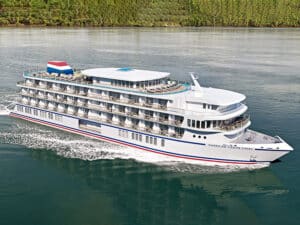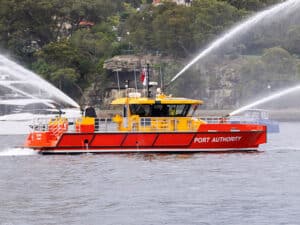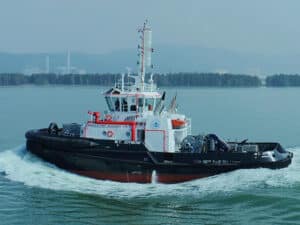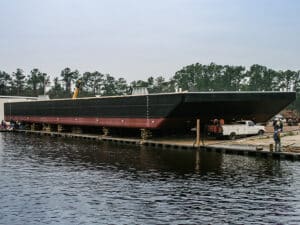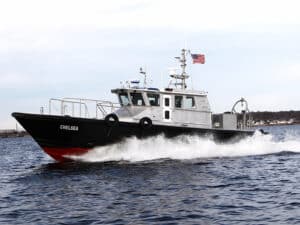
USACE workhorse leads NYC Fleet Week parade
Written by Marine Log Staff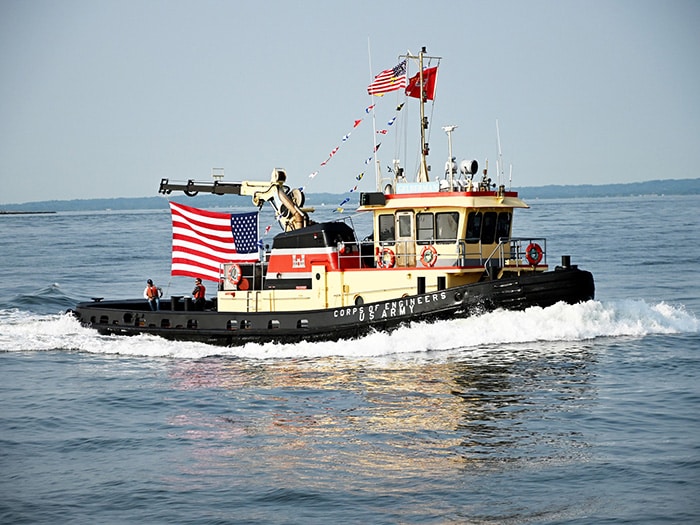
DVC Gelberman proudly flies the flag as it leads the Fleet Week parade
Fleet Week in New York City is a cherished tradition, a week-long celebration that every year invites a host of U.S. Navy ships, Coast Guard cutters, U.K. Royal Navy and Royal Canadian Navy vessels to dock in the metropolis and give the public a glimpse into the world of maritime defense and naval operations. This year, though, the parade was not led by a warship, but by a Corps of Engineers workhorse, the drift collection vessel DCV Gelberman.
For decades, the DCV Gelberman has played a crucial role in the maintenance and safety of New York’s waterways, ensuring they remain navigable by removing obstructive objects. This year, however, it was given a new task and a new level of visibility. On a beautiful sunny morning, as crowds lined the City’s waterways, the DCV Gelberman made its grand entrance into the new York Harbor, leading a majestic procession of naval ships.
“This was an unexpected but fitting role for a vessel that is typically unsung despite its critical function,” says the New York Engineer District. “As it led the procession, the DCV Gelberman was emblematic of the U.S. Army Corps of Engineers’ mission to deliver vital public and military engineering services, and of the essential work done behind the scenes to keep our ports and waterways functional. It was a testament to the diligent, dedicated efforts of the Army Corps team at Caven Point, embodied in this one industrious ship.”
Delivered in 1980, the 46 foot long DVC Gelberman is one of three New York Engineer District drift collection vessels, but not the oldest. That title is held by the 1948-built DVC Driftmaster, which is set to be replaced by a new diesel electric hybrid vessel currently under construction at Thoma-Sea Marine Constructors LLC, Lockport, La.
The three drift collection vessels are used on a daily basis (one vessel works on each weekend day) to collect large floating drift that is a threat to all vessels’ hulls, rudders and propellers.t
The project effort consists of locating, collecting, removing and disposing of up to 530,000 cubic feet or drift and floatables per year, which equates to about 450 TEUs (Twenty-foot Equivalent Units) of inter-modal cargo containers, or 225 forty-foot highway tractor-trailers. Drift is a very serious threat to all vessels’ hulls, rudders and propellers.

